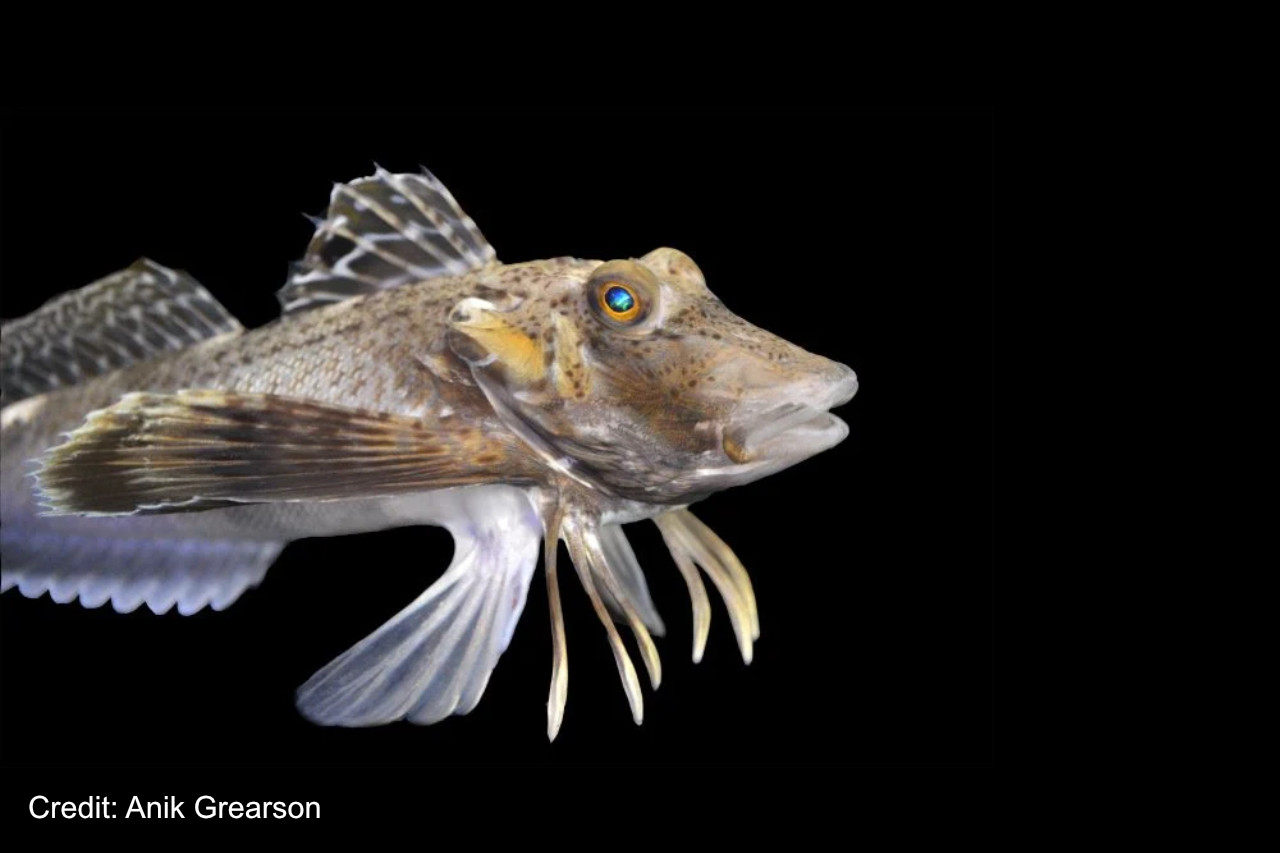Fish That Walk: Unlocking the Evolutionary Secrets of Sea Robins

Research on sea robins, sparked by their leg-like appendages, uncovered their complex sensory and genetic adaptations, making them valuable subjects for evolutionary biology studies. These adaptations connect sea robins' traits to broader biological processes, including those in humans. Their six leg-like appendages help them thrive as bottom-dwellers, enabling them to scurry and dig for prey, which often draws other fish to steal their discoveries. This unique behavior and anatomy caught the attention of Corey Allard, who began studying them after encountering them at the Marine Biological Laboratory in Cape Cod in 2019. Allard works in Nicholas Bellono’s lab, which explores sensory biology in various marine animals.
Corey Allard's research on sea robins, driven by their unique leg-like appendages, explored how new organs develop. Collaborating with Stanford researchers, Allard’s work led to two papers in Current Biology, providing a detailed understanding of how sea robins use these "legs" and the genetic mechanisms behind their development. The "legs" are extensions of their pectoral fins, which function as sensory organs, helping sea robins detect mechanical and chemical stimuli. Experiments showed that these appendages allow the fish to locate buried prey without visual cues, enhancing their evolutionary understanding and adaptation strategies.
During their study on sea robins, researchers accidentally received a different species, leading to an unexpected discovery. While they initially thought the new fish were faulty, they realized they had acquired two distinct species: Prionotus carolinus and P. evolans. P. carolinus could dig and detect buried prey using its shovel-shaped, papillae-covered legs, which are sensitive to touch and chemicals. In contrast, P. evolans lacked these sensory adaptations, using its rod-shaped legs primarily for locomotion. This finding revealed that the papillae on P. carolinus' legs are evolutionary specializations, underscoring functional differences between the species.
Corey Allard's research on sea robins' sensory organs involved analyzing museum specimens to trace the evolution of their unique leg morphologies. His findings suggest that the digging behavior, seen in some species, evolved relatively recently and is geographically limited. Sea robins' adaptations, especially their leg-like pectoral fins, make them valuable for studying evolutionary biology and environmental adaptation. Similar genetic transcription factors controlling the development of sea robin legs are found in other animals, including humans, potentially offering insights into traits like bipedalism. Collaborating with other researchers, the team used transcriptomics and genomic editing to uncover the genetic factors behind sea robin leg formation. This comprehensive study even involved creating hybrids between species with different leg shapes, providing a deeper understanding of the genetic basis for these traits. The research serves as a model for investigating evolutionary adaptation through behavioral, molecular, and genetic perspectives. To learn more please head to SciTechDaily’s article https://scitechdaily.com/fish-that-walk-unlocking-the-evolutionary-secrets-of-sea-robins/